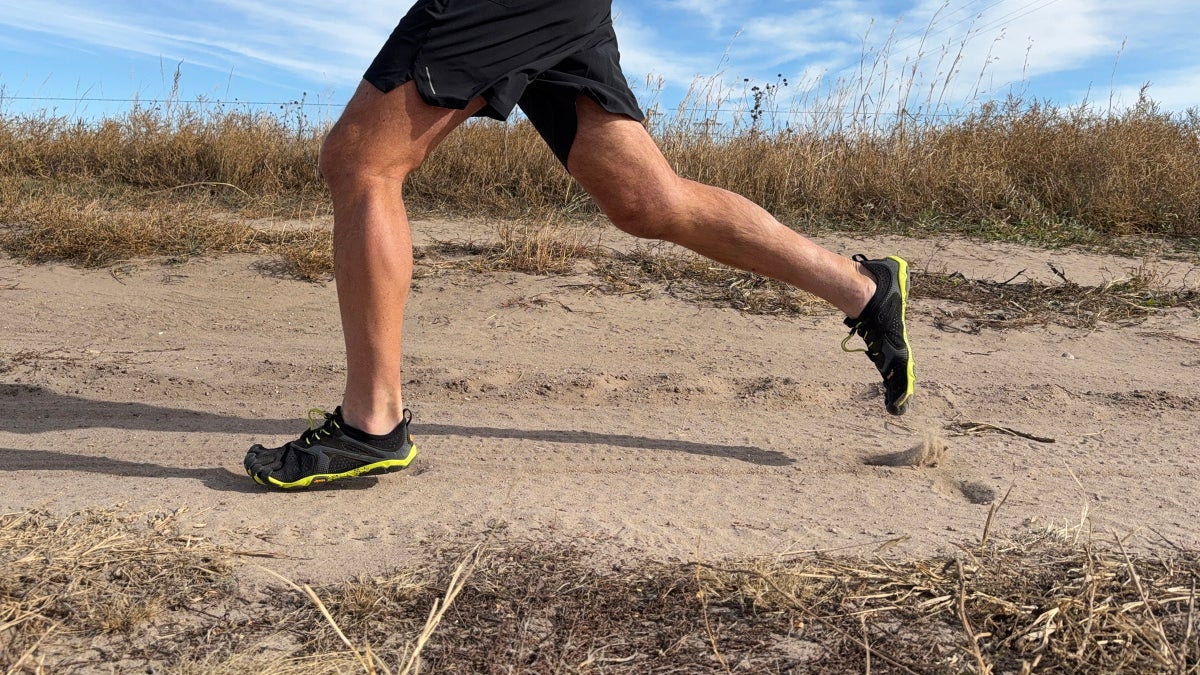
Everyone agrees that endurance athletes sometimes overdo it. They push their bodies too hard and don’t refuel or recover enough, with potentially serious consequences for their performance or health. But it’s less clear why this happens and what’s going on in their bodies. Nebulous concepts like “overtraining” and, more recently, “relative energy deficiency in sport” (REDs) have been hotly debated.
A new paper in the International Journal of Sports Physiology and Performance takes a stab at filling this gap. When you’re training too hard and not fueling enough, according to the new theory, it’s your thyroid hormones that start the cascade of negative effects. This suggestion doesn’t come out of nowhere: over the years, numerous elite endurance athletes have been diagnosed with thyroid problems, and the potential abuse of thyroid medications—which are not banned by antidoping authorities—remains controversial.
What the New Theory Says
The goal of the new paper is to explain REDs, which is the constellation of symptoms that ensue if you don’t get enough calories to fuel your training. Sports scientists used to talk about the “female athlete triad,” focusing on eating disorders, missed periods, and weakened bones. REDs broadens the scope to include men as well as women and a wider range of symptoms, like sleep disruption and impaired immune function, but there’s no single test that tells you whether you have it or not.
A research team led by Anthony Hackett of the University of North Carolina proposes a specific sequence of events that leads to REDs and its associated problems. The basic picture is that excessive training stress combined with underfueling increases levels of the stress hormone cortisol, which in turn suppresses levels of the thyroid hormone T3, which in turn wreaks havoc on your muscles, metabolism, hormone levels, and ability to respond to training.
The added twist is that Hackett argues that it’s not just about inadequate calories. Not getting enough carbohydrates, in particular, is an additional risk factor for triggering the initial rise in cortisol. If you want to avoid REDs, in his view, you need to get enough calories and enough carbohydrates—overall and throughout each day—and, if in doubt, check your T3 levels.
The Thyroid Backstory
There’s a long history of rumors and speculation about thyroid function in endurance athletes. Most famously, Nike coach Alberto Salazar was accused of pressuring athletes to get a diagnosis of hypothyroidism so they could go on medication, or even to take medication without a prescription. Prolonged heavy training was thought to suppress thyroid function; even if hormone levels were at the low end of the normal range, medication was thought to rev metabolism back up, possibly making it easier to maintain a low weight.
The evidence for these claims has always been thin to non-existent. The few studies that exist tend to find that sudden increases in training cause a temporary decrease in hormone levels—likely a consequence of elevated cortisol levels from the stress of training—but that they return to normal once you’ve adjusted to the new training level.
No studies have found that thyroid meds improve athletic performance; world anti-doping authorities looked into the question after the Salazar case and elected not to add them to their restricted list. Interestingly, the prevalence of thyroid meds showing up in doping tests at the Olympics seems to be decreasing: at the 2024 Games in Paris, just 1.3 percent of tests contained thyroid medications, compared to 2.7 percent in Beijing 2022 and 1.8 percent in Tokyo 2021. Perhaps athletes are concluding that it doesn’t help.
On the other hand, when endurance training is combined with calorie restriction, thyroid hormone levels do seem to drop. Stay in this state too long, and it’s not surprising that problems then spread to other bodily systems. Hackney’s paper (which is free to read) goes into detail on the various ways that low thyroid hormones can influence other hormones like testosterone, progesterone, and human growth hormone. Suffice to say that it’s bad for training, racing, and general health.
The Carb Connection
In 2023, the IOC published an updated consensus statement on REDs. One of the new ideas they incorporated was the role of low carbohydrate availability in exacerbating the condition. For example, getting less than 30 percent of your calories from carbohydrates seems to cause elevated cortisol levels both during exercise and at rest. And studies have found that being short on carbs rather than just calories has an independent effect on REDs symptoms like bone-weakening after training.
That claim made me wonder what happens to people on a low-carbohydrate ketogenic diet. A quick search suggests that, indeed, going on a ketogenic diet is associated with a decrease in T3 levels. In this study, the effect is seen as a potential “metabolic advantage” that helps people lose weight. Even if that’s true (which is far from clear), an advantage in sedentary people trying to lose weight may well be a serious disadvantage in an endurance athlete trying to fuel and recover from high-level training.
Of note is the idea that even brief periods of calorie or carbohydrate deficits can cause problems. You might get plenty of both over the course of a day. But if you do a long, hard workout early in the day and get most of your calories at dinner, you’ll spend many hours in a state of calorie and carbohydrate deficit. I wrote previously about a study that linked hourly calorie deficits to elevated cortisol levels, which is the first step in Hackney’s proposed REDs cascade.
As Hackney and his co-authors note, the carbs-cortisol-thyroid connection is still just a hypothesis. It remains to be tested and perhaps refuted. But coming up with these kinds of testable hypotheses is important for moving forward our understanding of the underlying physiology of REDs. The practical takeaway for now is that you should be conscious of your carb intake as well as your calories during periods of heavy training, and that you might want to keep an eye on your T3 levels.
And if they’re low or borderline? That’s a conversation to have with your doctor, but the answer isn’t necessarily to go on thyroid medication. The piece of reporting around the Salazar scandal that has always stuck with me most vividly is 5,000-meter runner Lauren Fleshman’s brush with the idea that her thyroid function might have been suppressed by heavy training. She was considering going to the doctor that Salazar’s athletes went to, she told ProPublica’s David Epstein, but first she ran the idea past her own coach, Vin Lananna. His response:
“Ya know, you could do that, and if you want to do that, it’s your career, and I don’t think there’s necessarily anything illegal about it, but the reason why your thyroid is as messed up as it is is because you’re not resting enough, you’re sleeping in an altitude tent, and you’re training too hard. And you have to back off, you have to change those things, you have to take responsibility.”
Fleshman took that advice to heart. It’s not easy advice for a motivated athlete to take, but in the long run it’s essential for your performance and your health.
For more Sweat Science, sign up for the email newsletter and check out my new book The Explorer’s Gene: Why We Seek Big Challenges, New Flavors, and the Blank Spots on the Map.
The post What Overtraining and Underfueling Do to Your Thyroid appeared first on Outside Online.














